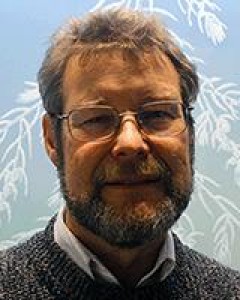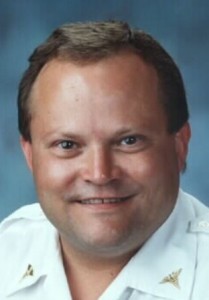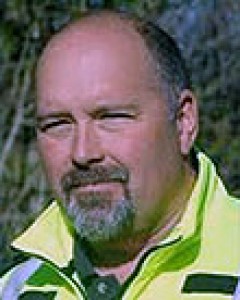Introduction
For the past 50 years paramedic services and paramedic roles in high-income countries, as defined by the World Bank1, have successfully evolved in response to changes in community needs and expectations. This has seen a transformation from people in often voluntary, semi-skilled roles to paramedics who have extensive professional education, broad scopes of practice and acceptance as health professionals2-4. Like other frontier and remote health services, paramedic services must establish and maintain services to meet the changing needs of communities that often lack the infrastructure and services taken for granted in metropolitan and regional locations. One distinguishing feature of many frontier and remote paramedic services is the deployment of large numbers of voluntary staff and first responders5-7.
Paramedics and their employers, who provide services through different organisational models, are asked to respond to health system changes, and the changing values and expectations of communities, by continually developing new and innovative models of care8. Standing still and continuing to provide the same services as in the past is not a viable or acceptable option9. In response to demands for high quality emergency response services, some paramedic services have invested heavily in frontier and remote areas, employing more clinical staff, extending first reponder programs and establishing new ambulance stations. Paramedic services and other medical services have successfully reduced mortality related to cardiac arrest and major trauma in more densely populated areas, including regional population centers10.
Less obvious has been evidence of well-developed strategies to address the complex needs of aging populations in the resource-poor settings typically found in frontier and remote locations. In some countries, extended and innovative paramedic roles have emerged to address these challenges, although they are not always well documented or evaluated11. These models have different names, with the best known described variously as extended care paramedics (ECPs) and community paramedics (CPs) that operate within paramedic services.12 Another model in which community paramedics are embedded in part of the healthcare system outside of paramedic services is known as the mobile integrated healthcare model. This model is largely confined to the USA, where it is used as a strategy to deal with a highly fragmented health system13,14.
The aim of this article is to review paramedic models of service delivery, with an emphasis on models that have the potential to improve the health and wellbeing of frontier and remote populations.
Methods
A narrative review15 was undertaken to identify past, present and future paramedic models that have relevance to frontier and remote settings16. The databases searched were CINHAL and Medline as these were judged to be the most likely to yield useful results, while key paramedic-specific journals were individualy searched in the event that they were not indexed. Search terms were ambulance, paramedic and EMS. These were then combined with model* and rural, remote and frontier. Citation lists were then examined to identify other resources in both the peer-reviewed and grey literature. The search was restricted to English language articles from the year 2000 onwards to ensure that only contemporary articles were identified for synthesis.
Results
Established paramedic models
During the 1950s and 1960s, the volunteer transport ambulance model, based on the values of community informed self-determination, developed in communities to meet local needs for transport of the sick and injured to local hospitals and medical services2,17. This model has been enhanced and still exists in many frontier and remote settings in high-income countries. The technological model, characterised by professionally staffed and managed paramedic systems that provide prehospital care based on the medical model, including advanced technology and technically skilled staff, is the dominant model in metropolitan and regional settings where sufficient resources are available.18
Paramedic services throughout the world have a long history, with many, such as those in Australia and New Zealand, boasting direct links with St John Ambulance, along with some military connections4,19,20. In the USA, links with fire services have become more prominent than in other high-income countries. This shared history of volunteerism and a military command and control culture has greatly influenced the evolution and day-to-day operation of paramedic services21. At a community level, this resulted in a volunteer model of service delivery that was community controlled and operated to meet the prehospital expectations of a local area, resulting in the community feeling safe and secure. This model continues in many paramedic services through the deployment of volunteer personnel and increasing numbers of first responder programs6,22. For many decades, this volunteer model based on community informed self-determination was highly valued and it met the expectations of local communities.
With changes in community expectations, paramedic education and organisational capacities, high-income country paramedic services have evolved to the point where the deployment of professionally trained and paid staff, centralised dispatch systems and standardardised clinical practice guidelines is the norm in larger population centers5. This technological model is based on the medical model and is characterised by sophisticated management systems and professionally trained personnel who have access to the latest biomedical equipment and who practice a high level of clinical intervention2. This model is expensive to establish and maintain due to the level of technology required and its extensive education and training needs5. It has been very successful, resulting in significant reductions in mortality and morbidity rates for populations experiencing cardiac arrest and major trauma23.
The technological model is based on the argument that the specialised health professionals, through their training and experience, are best able to determine the needs of the community. Prehospital emergency health professionals have been found to have a paternalistic approach to patients, having direct input into some aspects of their care24. There is a risk that this worldview might result in paramedics and associated medical specialities becoming estranged from the wider community and health system2.
Evolving paramedic models
When considering the strengths and weaknesses of the well-established volunteer transport and technological models in the context of ageing populations and sometimes fragmented health systems, there is an apparent need for an alternative paramedic model25. This recognition has seen the emergence of ECPs in the UK, New Zealand and parts of Australia26,27. In North America, the concept of the CP has emerged and programs have been extensively implemented and increasingly evaluated for efficacy and cost-effectiveness28-31. In reality, these two models share common characteristics and objectives, most clearly illustrated in their desire to avoid unnecessary patient transports, emergency department presentations and hospital admissions31. Changes in dispatch centre triaging is another related paramedic service strategy used to better manage growing demand for paramedic services32.
The main difference between the ECP and the CP lies in how and when they intervene in the patient journey, with extended care paramedics remaining essentially reactive and assessing and treating patients who have requested an ambulance. Community paramedic roles are more strongly aligned with a public health approach that involves a set of interventions both before and after the standard paramedic cycle of care33,34. Both roles share the need for a broader knowledge base, enhanced skills and well-developed clinical decision-making competencies11,35. They are examples of the emerging paramedic practitioner model.
Paramedic practitioner models are one of the essential components of any integrated prehospital system that aims to provide a range of services to prevent injury and illness, respond to emergencies, and facilitate recovery. Advocates of paramedic practitioner models have the view that prehospital care as an integral part of an integrated healthcare system, with professional staff sharing roles that best utilise their skills and knowledge36. These practitioner models are flexible and provide either an emergency ‘safety-net’ system or an advanced clinical care system, responding to emergency needs, combined with an integrated public health role that is closely linked to the broader health system. Paramedics have a key role in promoting healthy lifestyles, and preventing death and injury through public education programs37.
Two distinctive characteristics of paramedic practitioner models are the existence of their own research and development agenda and the multiple decision-points that exist during the cycle of care. The practitioner model is arguably more cost-effective than the technological model, while continuing to provide an appropriate level of clinical care for any given community. It is particularly suited to frontier and remote areas with higher paramedic ‘down-time’ and a dearth of other public health workers36.
Of particular interest to frontier and remote communities is the emergence of CPs, with emerging evidence supporting the argument that CPs could be part of a new model of care that addresses some of the reform needs in the health sector13,33,38-40, This emerging model is a community-focused extension of the traditional emergency response and transportation paramedic model, and is potentially attractive to frontier and remote communities that face the dual challenges of ageing populations and stressed health systems. The CP model has the potential to contribute to the re-calibration of paramedic roles and professional identity.
For frontier and remote communities, CP programs are able to fill identified gaps in the healthcare system by expanding the roles of paramedics and other paramedic service staff such as volunteer personnel and first responders, and providing flexible services designed to meet the needs of local communities. Typical CP program services include31,33,39,41:
- care management and home visits
- falls prevention
- medication management and compliance
- geriatric pathologies (diabetes and chronic obstructive pulmonary disease)
- palliative care
- phlebotomy
- vaccination
- wound care
- community referrals
- home assessments.
Conclusions
The emergence of paramedic practitioner models in various forms suggests that paramedics are able to contribute to the success of multidisciplinary healthcare teams that aim to make a sustained and positive impact on the health and wellbeing of frontier and remote populations39,42. There are growing calls for community paramedicine programs, utilising the knowledge and skills of practitioner paramedics, to respond to a wider range of patients in the community and contribute toward improved health outcomes and quality of life25,43,44.
Successful CP programs are driven by their collaborative efforts to improve and maintain the health and wellbeing of community members, they are integrated with local health systems, have viable treatment and referral options for subacute and chronic patients, are built on broad paramedic education and have inclusive governance systems42.
Wider implementation of paramedic practitioner roles, such as ECP and CP models, in frontier and remote settings face a number of potential barriers, such as the need to broaden paramedic scopes of practice, consideration of paramedic prescribing rights, review of paramedic education, the impact of paramedic professional self-regulation, and consideration of the future roles of volunteer personnel and first responders who are not paramedics. Some countries, most notably the USA, have the added challenge of aligning reimbursement systems to emerging paramedic practitioner models that are not focused on transport to hospitals45.
Paramedic practitioner program implementation challenges paramedic services and paramedics to move beyond their perceived ‘core roles’ that classify non-emergency patients as someone else’s problem. This step will be more acheivable when paramedicine is sees itself as more than ‘… the discipline and profession within which traditional pre-hospital medicine is performed’46. A change in orientation from an emergency response system, with the associated public safety identity, to a health service providing clinical care will require paramedic services and paramedics to take a more patient-centred approach to service delivery and to take action to strengthen their community engagement activities9,34,47,48.


